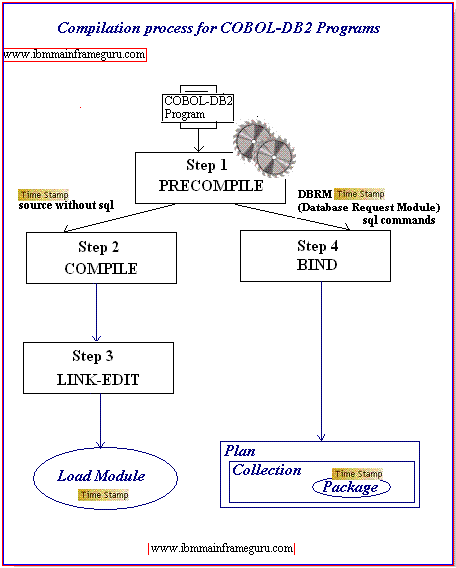CICS tips and Tricks COBOL Tips and Tricks Db2 Tips DB2 Tips and Solutions SQL tips and tricks About Srinimf We show solutions to developer problems and shares knowledge mainframe to digital technologies. Refer to your preprocessor documentation on the use of pointer variables and for additional information on dynamic SQL in COBOL programs. Sample COBOL Program with Embedded SQL. The following program shows how SQL statements can be embedded in a COBOL program.
Micro Focus COBOL
| Note: | This section documents the compile and link options recommended for DB2 programs using Micro Focus COBOL with HP-UX Version 10. The corresponding information for HP-UX Version 11 was not available at the time of this writing, and may vary. Please see the README file for additional information. |
The script file bldmfcc, in sqllib/samples/cobol_mf, contains the commands to build a sample COBOL program.
The first parameter, $1, specifies the name of your source file. The second parameter, $2, specifies the name of the database to which you want to connect. The third parameter, $3, specifies the user ID for the database, and $4, specifies the password. Only the first parameter, the source file name, is required. Database name, user ID, and password are optional. If no database name is supplied, the program uses the default sample database.
| Compile and Link Options for bldmfcc |
|---|
The script file contains the following compile options: The script file contains the following link options: updat. You can run the executable file against the sample database by entering: | Note: | To build Micro Focus COBOL applications that do not contain embedded SQL, you can use the script file bldmfapi. It contains the same compile and link options as bldmfcc, but does not connect, prep, bind, or disconnect from the sample database. It is used to compile and link DB2 API sample programs written in COBOL. |
Building Micro Focus COBOL Stored ProceduresThe script file bldmfsp, in sqllib/samples/cobol_mf, contains the commands to build a stored procedure. The script file compiles the stored procedure into a shared library on the server that can be called by a client application. The first parameter, $1, specifies the name of your source file. The second parameter, $2, specifies the name of the database to which you want to connect. The third parameter, $3, specifies the user ID for the database, and $4 specifies the password. Only the first parameter, the source file name, is required. Database name, user ID, and password are optional. If no database name is supplied, the program uses the default sample database. The script file uses the source file name, $1, for the shared library name.
| Compile and Link Options for bldmfsp |
|---|
The script file contains the following compile options: The script file contains the following link options: sqllib/function to indicate that the stored procedure is fenced. If you want the stored procedure to be unfenced, you must move it to the sqllib/function/unfenced directory. These paths are in the home directory of the DB2 instance. | Note: | An unfenced stored procedure or UDF runs in the same address space as the database manager and results in increased performance when compared to a fenced stored procedure or UDF, which runs in an address space isolated from the database manager. With unfenced stored procedures or UDFs there is a danger that user code could accidentally or maliciously damage the database control structures. Therefore, you should only run unfenced stored procedures or UDFs when you need to maximize the performance benefits. Ensure these programs are thoroughly tested before running them as unfenced. Refer to the Embedded SQL Programming Guide for more information about fenced and unfenced stored procedures. |
If necessary, set the file mode for the stored procedure so the DB2 instance can run it. Once you build the stored procedure outsrv, you can build the client application outcli that calls the stored procedure. You can build outcli using the bldmfcc script file. Refer to 'Micro Focus COBOL' for details. To call the stored procedure, run the sample client application by entering: outcli The client application passes a variable to the server program outsrv, which gives it a value and then returns the variable to the client application. Exiting the Stored ProcedureWhen you develop your stored procedures, exit your stored procedure using the following statement: move SQLZ-HOLD-PROC to return-code.  With this statement, the stored procedure returns correctly to the client application. Cobol Cics Db2 Sample Program[ Top of Page | Previous Page | Next Page | Table of Contents | Index ]Sample Cobol Db2 Program Using Cursor[ DB2 List of Books | Search the DB2 Books ]
|
|
